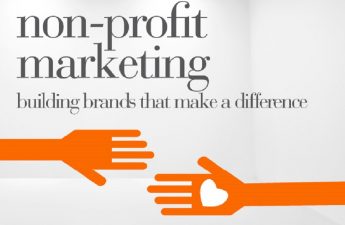These are tough economic times for everyone but they are particularly challenging for nonprofits, which are seeing a vastly increased demand for services while simultaneously experiencing a precipitous drop in donations and grant funding. An article in the March 1, 2009 edition of the San Francisco Chronicle by staff writer Meredith May, puts it this way: “Funding is drying up on all fronts. Individual donors, dealing with their own financial woes, are not giving. Governments, socked by property tax losses, have eliminated funding. Large philanthropic foundations have scaled back as the stock market has eroded an average 30 percent of their endowments.”
Michael Seltzer, educator, consultant, and author of the Foundation Center’s book, Securing Your Organization’s Future, described the “perfect storm” of circumstances that has led to a significant reduction of the nonprofit safety net for those in our communities who are most vulnerable:
- Federal, state and local governments are cutting back their support.
- Declines in the stock market are affecting the endowments of foundations.
- Individual giving is down as people cut back on everything considered “nonessential.”
- Corporate giving has declined, although some sectors such as defense and technology remain strong.
“We have never in my lifetime experienced so much turbulence on all four of those fronts,” he said in a podcast hosted by the Foundation Center entitled “Nonprofit Survival in Uncertain Times” on Nov. 4, 2008.
“The Quiet Crisis: The Impact of the Economic Crisis on the Nonprofit Sector,” a report published in March 2009 by the Civic Enterprises and the Democratic Leadership Council and coauthored by Bruce Reed and John Bridgeland, expresses it even more bluntly: “In the wake of the economic downturn, hospitals, nursing homes, nursery schools, senior centers, soup kitchens, and other nonprofit organizations have been hit by a triple whammy. The evaporation of wealth has decimated charitable donations; the state and local budget crunch is costing nonprofits their foremost paying clients; and the human need for nonprofit help is skyrocketing as nonprofit resources shrink.”
Seltzer’s advice is to “diversify your fundraising efforts” through planned giving, in-kind donations and maximizing the resources you already have. For example, he recommends examining your current roster of supporters, with an eye toward leveraging existing relationships. And some nonprofits have found an ideal way to do just that: social media.
A 2007 study by the Center for Marketing Research at the University of Massachusetts Dartmouth “proves conclusively that charitable organizations are outpacing the business world in their use of social media.”
The marketing survey, “Blogging for the Hearts of Donors: Largest US Charities Use Social Media,” was based on telephone interviews with 76 of the 200 largest charities in the U.S. in 2006, identified as such by Forbes Magazine. The survey found that “Seventy-five percent of the charitable organizations studied are using some form of social media including blogs, podcasts, message boards, social networking, video blogging and wikis. More than a third of the organizations are blogging. Forty-six percent of those studied report social media is very important to their fundraising strategy.”
Adopting a social media strategy, however, can be a challenge, especially for small- to medium-sized nonprofits working with small staffs and limited funding. Developing a professional presence on the Internet takes time, a certain familiarity and comfort with the technology, and basic tools. Although it is possible to post pictures of the dogs in your shelter from your camera phone, that may not present the best “picture” of your organization to the world.
Blogging 101
Blogging has been implemented by 34% of the charities surveyed by the Center for Marketing Research, while 62% claim to be familiar with it. Blogging can be a very effective way of communicating more directly with members, reaching out to potential volunteers, tapping into audiences interested in your cause, building lists of supporters and, in some cases, raising money. Another study by the Center, however, outlines some of the challenges faced by potential bloggers which are particularly relevant to underfunded and understaffed nonprofits.
According to the study “Behind the Scenes in the Blogosphere: Advice from Established Bloggers,” blogs take time and commitment. Most bloggers who participated in the survey underestimated the time involved in maintaining a successful blog, and 38% have increased the amount of time they spend on their blogs. The point is, according to these experts, unless you’re prepared to spend at least an hour a day on it, blogging may not be the best use of your resources.
Podcasting
“Podcasts — digital audio files posted to the Web for anyone to download and listen to — are a useful, affordable way for nonprofits to expand their reach and further their missions,” says TechSoup. As “the technology place for nonprofits,” TechSoup even offers to walk you through the process of creating and posting your own podcasts. With a microphone or camcorder, a computer and a connection to the Internet, your organization can create and distribute podcasts that enhance your visibility and get your message out.
Online Video
The explosion of YouTube as a social media tool in which users can upload, view and share video clips can be a boon to cash-strapped nonprofits. For the price of a digital camcorder and the ability to upload the video, organizations can reach beyond their local communities and increase their exposure by registering with YouTube’s “Nonprofit Program,” described as “a powerful way to show your organization’s impact and needs.”
The Nonprofit Program also provides advice and information on how run video campaigns, how to make and edit videos with limited staff and money, how to make the best use of YouTube’s nonprofit channel and how to use free Google tools to promote your organization.
“Twitter Philanthropy”
“Twitter philanthropy” is the new phenomena of social giving through Twitter, a form of “micro-blogging,” text-based posts of up to 140 characters. An article by Matthew Shaer of The Christian Science Monitor in his article “And Now, Twitter Philanthropy” describes the popularity of this new medium for raising money: “They gathered at beach resorts in Dubai, pubs in London, and a noisy cafe in Beijing. Here in New York, they flocked to a popular West Side bar. By the time the sun set on the first annual Twestival, some 10,000 attendees in 200 cities across the globe had donated more than a quarter of million dollars to clean-water efforts in Africa and India.”
Almost 2,000 nonprofits are already registered with Twitter through Twitter.com/nonprofitorgs, and for most it’s simply another way to stay connected and build relationships with constituents.
“What are they saying about us?”
Part of a well-rounded plan for using social media are the tools you use to “listen” to what people are saying about you and your organization. You can use Google alerts or the blog search engine Technorati or set up RSS feeds and a Twitter “listening post” to monitor the conversation. By setting up searches on your organization’s name or issue such as “animal rescue” or “homelessness”, you can “hear” what people are saying about you, both good and bad, which gives you the opportunity to engage in a conversation, clarify your message, or even shift your organization’s priorities if you find a common negative theme.
These are just a few of the resources available to nonprofits for getting their message out and extending their influence in an increasingly tech-savvy world. Young people in particular are much more inclined to be “tuned in” to the social media scene and it only makes sense for nonprofits, whose ability to function depends in large part on young, energetic volunteers and interns, to tap into this rich resource to promote their mission, accomplishments and needs.



